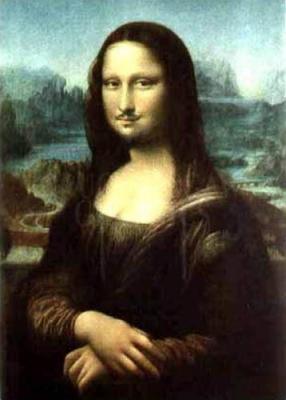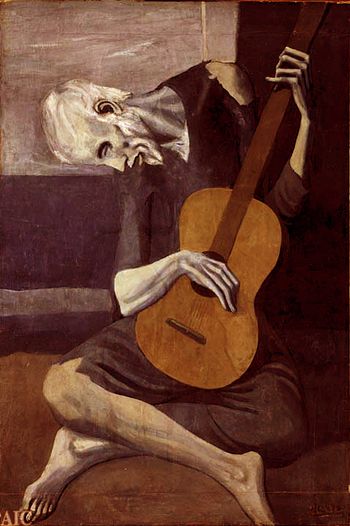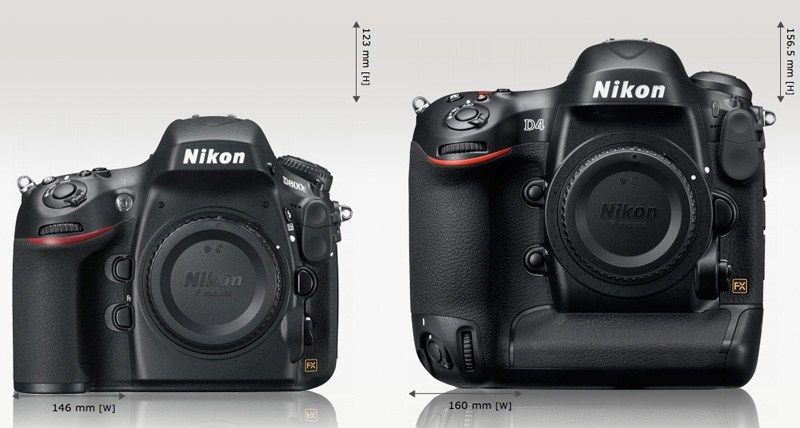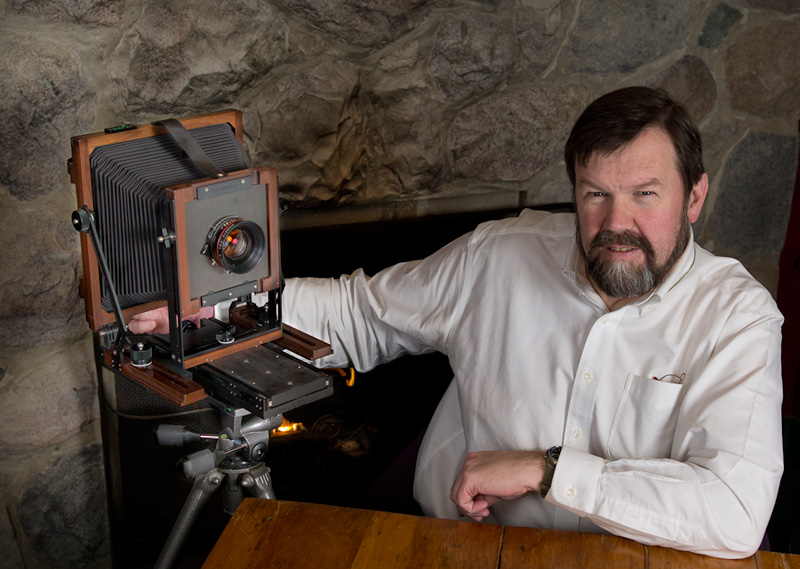
By Marcel Duchamp
This looks like a post, but it isn't a post. It's a comment. I just get to tack my comment to the bully pulpit, is all, perch it on top of the pile where it can be seen, since I own the blog. As Michael Reichmann once said, it's good to be king.
I was involved in a semi-serious incident at school in seventh grade. It had to do with art class. From an early age, I drew pictures; it was my claim to fame when I was a kid. "Mike's an artist." Because every kid who draws pictures impressively is an artist. (Appropriately, we're easy on kids that way.)
For a while in seventh grade we had a substitute art teacher. I loved my regular art teacher and was very loyal to him, and didn't give the poor sub much of a chance (sorry, subs everywhere. You know how it is). So anyway, I'd been working on a certain drawing for several weeks. The temporary teacher, who probably just wanted to be liked, was making her rounds of the class. She came around to my table and started gabbing at me. (Don't need any comments, thanks; keep it moving. I just thought that, didn't say it.) Then, to my horror, she actually took my drawing board and drew on my drawing to illustrate her point. I told her calmly that if she ever drew on my work again, I'd tear up the picture. She told me not to be insolent. Then I fastidiously erased every trace of what she'd done and got back to work.
A day or two later, she came around and did it again, more extensively this time.
I'm afraid I made a bit of a scene. I tore the drawing off the drawing board, ripped it up in front of her, and stomped out of the room. I went right to the headmaster's office and explained to the vice principal that I wasn't going back to art class until the regular teacher returned. And I meant it, brother. They could call my parents, they could suspend me, they could flunk me, they could expel me, but I wasn't going back. (It's right there in the description of my basic personality type—see paragraph six at this link.)
Fortunately, it never came to a head; they let me skip a few art classes, and then the regular teacher returned.
Here's why I tore up the drawing: it was mine. Not hers. Mine. Art belongs to its creator. Even if not legally, as property, then ethically and morally and spiritually. Other people have to respect that. So I thought in seventh grade, at least.
Another story: when movement conservatives were embarked on a PR campaign to try to convince the public that Ronald Reagan had been a more popular President than he was, there was an initiative for a while to add his head to Mount Rushmore. I was appalled by that—well, on more levels than one, to be truthful, but basically—essentially—I was astonished and amazed that no one considered or even mentioned the Borglums. Two sculptors, father and son, spent their lives on that one work of art. And the suggestion was that "we" should come along years later and deface it (pun intended) by adding another head? I don't care whose head—that would have been artistic vandalism of the first order, a defilement. Maybe not quite as evil as the Taliban bombing the Buddhas of Bamiyan or as blatant as Laszlo Toth's fifteen hammer blows on the Virgin Mary's nose, but distinctly and definitely a crime of the same order.
So I was really surprised that this hardly came up in all the discussion about Sanna Dullaway's colorizations. Some of those pictures are historical documents, some of them are photojournalism, but several of them are either art or function as art. What about respecting the people who made them?
Try this as an exercise: imagine your very best picture—something
you're really proud of and think you got just right. Now imagine someone
else coming along, taking your file, and completely changing it in some
fundamental way, and then spreading that version around with your name
on it.
Maybe you wouldn't mind. I sure as hell would.
In 1919, in one of his famous Dada gestures, Marcel Duchamp penciled a mustache on a print of Leonardo's Mona Lisa and called it "hot pants," which was risqué at the time. But that was a transformative act, a political statement; he was implying—enacting—the need for rebellion against received cultural authority. And of course Sanna Dullahan didn't deface any originals. I presume she just took JPEGs of the pictures and went to work with her virtual Marshall Oil set.
No harm done. Except to good taste, and that's not rare. People do jokey, knee-jerk things to representations of art all the time. It's disrespectful, but not serious...equivalent, maybe, to urinating in public or farting at a formal dinner. I think the only difference here is the rather startling notion that these particular photographs needed to be improved, and that adding colors is the obvious way to do it. Why don't they take that damned guitar player of Picasso's and add some colors other than blue? What, was he short on other tubes of paint that day? We should fix that.
 There, that's better. Stupid Picasso.
There, that's better. Stupid Picasso.
My own reaction is that it's essentially and deliberately disrespectful of the artists...the photographers. And even if any of them would have made their pictures in color if they could have, it's still disrespectful—because of course an artist is conscious of his or her medium and takes it into account when making all the many decisions that need to be made in the process of creation. Maybe one or the other of those photographers would have worked in color. But they didn't, and no one knows how they would have done their pictures differently if they'd been taking color into account.
It's disappointing to me that so few people rose to the defense of the
artists' intentions, and their spiritual and ethical "ownership" of
their work. If someone peed all over your work, I'd come to the defense of you.
It does, however, regrettably, dovetail right into a longstanding and persistent attitude toward photographers. Ignoramuses have always considered photographs to be "appropriatable," if that's a word. As if photographers are just "camera operators" possessed of approximately the same level of intellectual acuity and intentionality as organ grinders' monkeys. Have at it, all you casual defacers and defilers, all you helpful teachers—you certainly won't be the first, and you certainly won't be the last.
A final story. A friend of mine, who was completely committed to color photography long before color photography was cool, and who happens to be a glowering, taciturn fellow who suffers fools exceedingly poorly, used to absolutely despise the phrase "original in color." As you know, back when monochrome reproduction was much cheaper and more widespread than color reproduction, many publications of almost every type—even art-critical texts, sometimes—would run reproductions of color pictures in black and white and excuse themselves with that phrase. "What the hell are they talking about?" my friend would growl. "It's not even close to being the same picture."
Well, the shoe's really on the other foot now. I suspect that a hundred years from now, they'll consider the recent seismic shift from black and white to color in lenticular imagery to be at least as significant as the digital transition it paralleled. Those execrable but harmless colorizations just need to excuse themselves unilaterally with a peremptory stock phrase, the verbal equivalent of a contemptuous shrug: "Original in Black and White."
Mike
P.S. No political comments please. Yes, I'm aware that I "opened the door," but see paragraph 1. Sorry.
ADDENDUM: Readers with long memories will recall that I was sorely tempted to do the opposite of a Dullaway to John Moore's famous picture. I did think it worked better in B&W, although I deferred (a trifle reluctantly) to the photographer's judgement. ...Naturally: de-colorizing someone else's work is no better than re-colorizing it.
ADDENDUM #2: Thanks to the many commenters who posted such excellent comments. Many of them are long and naturally I couldn't "feature" more than a few, but many of them were feature-able and many more were thoughtful, enlightening, entertaining, or some combination of all three. Thanks for that.
Original contents copyright 2012 by Michael C. Johnston and/or the bylined author. All Rights Reserved. Links in this post may be to our affiliates; sales through affiliate links may benefit this site.
A book of interest today:


(To see all the comments, click on the "Comments" link below.)
Featured Comments from:
Robert P: "Duchamp wrote 'L.H.O.O.Q.' on his Mona Lisa which in french sounds like "Elle a chaud au cul" which effectively means that she is horny. ("She has a hot ass"—hot as in temperature, not hot as in sexy). It is a pretty vulgar expression. Vivent les femmes chaudes!"
D.C. Wells: "As a guitarist who rips off others' licks whenever I can, occasionally adding a little of myself in the process, I find nothing ethically objectionable about the young Swede's colorizations of the B&Ws. But that analogy is weak, because she and Time were honest (unlike me) in showing the original photographs and crediting the original photographer. The result was simply an exercise in reimagining the past in a different visual voice. Perhaps my sense of right and wrong when it comes to visual art is skewed, but it's a grand tradition in music. (Perhaps you'll remember the Toys' 'A Lover's Concerto' based on J.S. Bach's Minuet in G, except that it might well have been someone else's music in Bach's notebook. It's one of hundreds such borrowings, almost all probably better.)
"To propose another musical analogy, your and Ctein's objections remind me of those raised in the late '60s to Dylan or anyone else playing folk songs with electric guitars, whether their own compositions or others'. Purists persist, though. I recently overheard someone complaining about hearing Jimi Hendrix and Black Sabbath tunes played on a classical guitar. I am not sure whether the classical guitar or the rock music was seen as the victim.
"I might or might not like the results, but I can't seem to muster anything but genuine fascination over her straightforward and all-hands-above-the-table creative effort. In fact, teachers do things like this with hypotheticals all the time—'Imagine if Bach hadn't started composing before the modern piano was invented' or 'Imagine if Hamlet had been the son of a Chinese warlord' or 'What would Homer think about Joyce?' Ms. Dullaway's reworkings have cause me to think about the people and times and technologies portrayed in the photos in ways I might never have otherwise. Young Anne Frank was a real person, 'in color' when she was alive. Why is it a sacrilege to portray her as she might have been when alive? Is it that we are less interested in Anne as a person than as a symbol? Would a modern movie of her life and death have to be in B&W? I don't find the B&W version of her any more genuine as a portrayal of her personhood.
"I think you are saying that photographs and other two-dimensional arts deserve more protection than other art forms from unlicensed imagination, reworking, modernization, etc. even where the original art and artists are fully credited. If so, I don't yet understand why."
John Camp [not responding to D.C. Wells' comment, although his comment came in directly after D.C.'s —Ed.]: "I'm always amazed at the number of people who take these issues seriously (as I do) and at the number of intelligent, but differing, opinions.
"One critical aspect of these things is 'permission.' It's not like covering a song—try covering a song without the permission of the composer, and you will find yourself in court. If you get permission, then he's essentially approving your alterations (if any). So that's all right, then. Messing with somebody else's art isn't so all right. When Richard Prince appropriates something, he's not stealing art—he's stealing an advertisement, and changing it, if only notionally. I have a lot more trouble with the woman who rephotogaphs art photographs and presents them as her own...though that ain't going anywhere.
"About Mike's example of the teacher's interference—I've taken a lot of drawing classes, and have had teachers draw on my drawings, and it never bothered me, because I didn't consider my drawings to be art—they were were exercises. And if the teacher says, 'No, the back lie of the head goes like this,' and draws it in, and you instantly see where you were wrong, that's a valuable thing. (And I've given them permission to do that.) Mike apparently didn't consider the work he was doing to be an exercise, even though he was in class and supposedly learning, but to actually be art. That's a big difference, and should be acknowledged.
"If you asked 1,000 art historians who was the most influential and greatest artist of the 20th century, I suspect that something less than one percent would mention Duchamp. In fact, I think that claim in occasionally made just to irritate people. The three artists who most influenced the 20th century were probably Cezanne, van Gogh and Gauguin, from which derived the 20th century's cubism and modernism; expressionism, especially among the German-speakers; and synthetic color, from which we got the fauves and Matisse and everything that came out of that. Duchamp helped create (or at least took credit for) an attitude (rather than art) which mostly didn't lead to anything except possibly long discussions in sophomore dormitories, followed by the consumption of large numbers of Ding-Dongs and Hostess Snoballs. I thoroughly approve of that, because everybody's got to start somewhere."
Steve Barnett:
Good artists borrow, great artists steal.
—Pablo Picasso[*].
"The context of the Duchamp Mona Lisa is that he was borrowing objects and artistic concepts and amalgamating them into something else. The fact that he didn't go through Da Vinci's entire back catalogue, or labour the point, is testament that his work was ongoing, moving on, working through ideas. The difference between that and the hand coloured 'Abe Lincoln' series are that those are laboured, they are intellectually one dimensional, they are one idea. Rather like a child who learns a trick and repeats time after time...'look what I can do.' Duchamp moved on, and artists like Warhol and Pollack moved on, they explored their idea's through variations, milked them, and when they had wrung them out they 'saw' something else.
"Now, seeing one Abe Lincoln in colour can be transformative. It pulls you up and makes you think. Just as the digitally coloured films of the trench fighting in WWI now being broadcast on history channels do. The colour puts the people into the present—the dead and dying are not old memories but now real. But that subverts history. Those dead and dying are memories, just as Abe Lincoln is a memory; he was real then, but not now.
"And this is something only photography can achieve, to confuse 'then' as if it was 'now.' The photograph I took ten mintues ago was 'then,' the moment stayed recorded, but the tree moved in the wind a bit since. So stealing other peoples' old photographs to hand colour is photographic kitsch; it is mangling history or 'the spirit of the time' and making it cute for a modern audience. Just the way any other practitioner of kitsch works, transforming higher principles of design or art into thinner and less challenging shadows of the original."
[*That quote originated with Philip Massinger, in an essay about T.S. Eliot, but the idea stands. —Ed.]
Roger Bradbury: "I'm being a bit slow in the thinking today. Of course! This is not a post, neither is it a pipe."
Mike replies: Glad a few people picked up on that. It's too obtuse, I grant that.




















